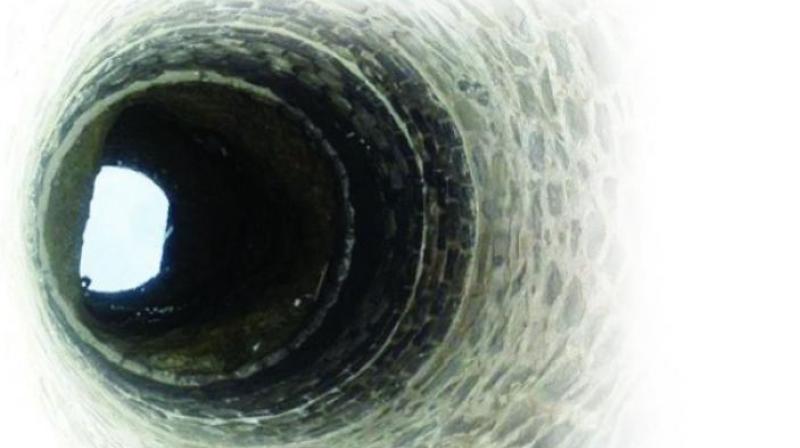Hyderabad: Groundwater level dips two-fold in 5 years
Even though water level recovered in 2017, it's falling due to scanty rains.

Hyderabad: Groundwater-level has depleted to 1,000 feet in peripheral areas of the city and by 200 feet alongside the Musi river, according to the officials of the department.
Rampant use of around 18 lakh borewells has made the situation worse. Officials said that the water level will plunge further if digging of borewells is not banned in the city. An official said that the situation has turned worse and the water table could not be revived even if the city receives surplus rainfall during the monsoon season.
Besides this, another area of concern is the Hyderabad Metropolitan Water Supply and Sewerage Board which are not supplying water on a regular basis and citizens residing in areas such as Kukatpally, Quthbullapur, Amberpet, Kapra and LB Nagar had been relying on tankers which are providing water once in 15 days.
The groundwater-levels in the city have decreased two-fold within five years. The ground water level was 12.5 metre in 2016 from 11.85 metres in 2015, 9.46 metres in 2014, 7.39 metres in 2013, 6.2 metres in 2012 and 5.5 metres in 2011.
Even though the ground- water level was recovered in 2017, it has been gradually falling due to scanty rainfall. The Hyderabad district groundwater officials said that the levels might dip to another five metres by the end of May.
It was supposed that rain water will sink down by 30 per cent into the ground which has been reduced to 5 per cent, according to the authorities. During the last four decades, there was an increase of residential area (10 to 44 per cent) and reduction of vacant land (38 to 2 per cent), open spaces, parks and play grounds together account 6.81 per cent.
The drastic changes in land use pattern has resulted in altercations in the hydrological cycle and has greatly reduced the scope of natural recharge of groundwater body.
Water conservation is practiced in very few buildings. As per the land use pattern, a total of 66 per cent, including residential areas, parks and play grounds (6.81 per cent), Defence establishments (4.83 per cent), public and semi-public (9.01 per cent) and vacant open lands (1.58 per cent) can be artificially recharged.
“The water board officials said that they have been bringing 600 million gallons of water a day from the Krishna and Godavari rivers, from outside the city, rather than tying up with the civic body to ensure that all buildings have rainwater harvesting pits,” B.V. Subba Rao, water conservation expert, said. He said that since the city had turned into a concrete jungle, only rain water harvesting pits could help change the situation.
However, water board officials claimed that they have been constructing reservoirs and supplying drinking water regularly.

